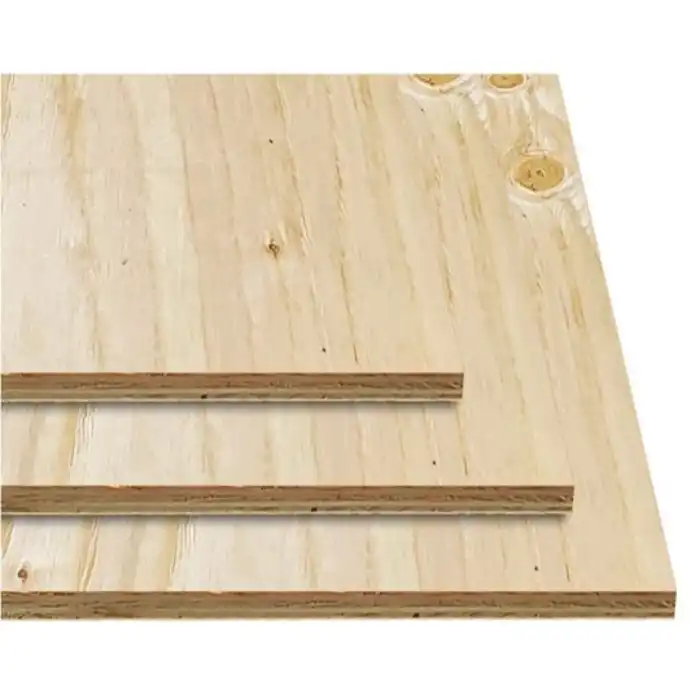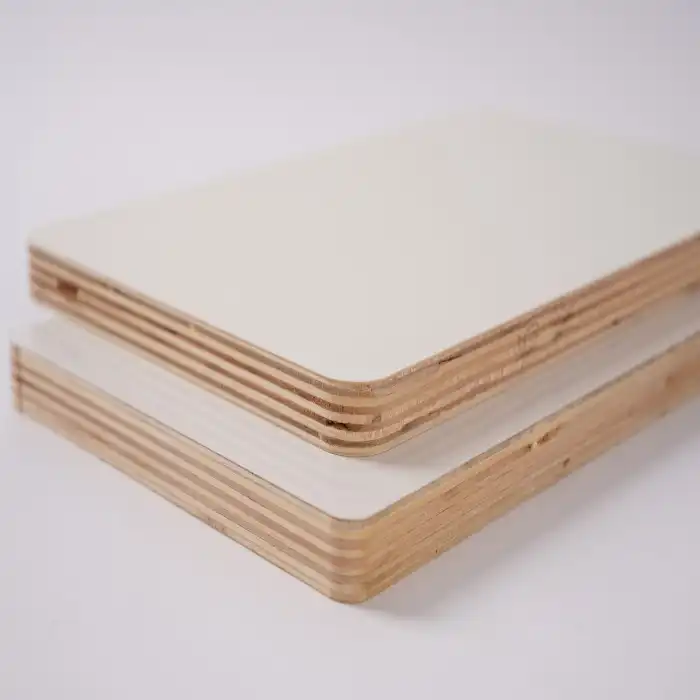
Can Melamine Plywood Withstand Commercial Kitchen Environments?
2025-04-25
Commercial kitchens represent one of the most demanding environments for building materials. With constant exposure to heat, moisture, cleaning chemicals, and heavy use, the materials used in these spaces must be exceptionally durable and hygienic. Melamine plywood has emerged as a popular choice for commercial kitchen cabinetry, countertops, and storage solutions, but many professionals wonder about its suitability for these challenging conditions.
Melamine plywood can indeed withstand commercial kitchen environments when properly specified and installed. This engineered wood product combines the structural strength of plywood with a protective melamine resin surface that resists moisture, heat, stains, and scratches. The melamine coating creates a sealed, non-porous surface that prevents bacterial growth and withstands frequent cleaning with commercial-grade disinfectants. While not suitable for direct food preparation surfaces or areas with extreme heat exposure, melamine plywood performs excellently for cabinetry, storage units, and vertical applications in commercial kitchens, offering durability and cost-effectiveness without compromising on hygiene standards.
Performance Characteristics of Melamine Plywood in High-Moisture Environments
Moisture Resistance Properties
Melamine plywood distinguishes itself in commercial kitchen settings primarily through its exceptional moisture resistance capabilities. The melamine resin surface creates a formidable barrier against water penetration, addressing one of the most persistent challenges in kitchen environments. This protective layer effectively seals the wood substrate, preventing moisture from reaching the core layers where it could cause swelling, warping, or delamination. In commercial kitchens where spills, steam, and regular cleaning are routine, this moisture resistance becomes invaluable. Melamine plywood maintains its structural integrity even when exposed to intermittent moisture, unlike untreated wood products that deteriorate rapidly in similar conditions. The manufacturing process involves thermally fusing melamine resin to the plywood surface under high pressure, creating a molecular bond that resists water infiltration at the microscopic level. However, it's important to note that while melamine plywood offers superior moisture resistance, it is not completely waterproof, and prolonged exposure to standing water can eventually compromise its integrity, particularly at unsealed edges or joints. Professional installation with proper edge banding and sealing of cut surfaces significantly enhances the overall moisture resistance of melamine plywood installations in commercial kitchen environments.
Heat and Temperature Tolerance
In the demanding environment of commercial kitchens, materials must withstand significant temperature fluctuations and heat exposure. Melamine plywood demonstrates impressive heat resistance properties that make it suitable for many kitchen applications. The melamine surface can typically withstand temperatures up to 350°F (175°C) for short periods without degrading, making it appropriate for areas adjacent to cooking equipment but not for direct heat contact surfaces. This temperature tolerance exceeds that of many other laminated wood products and contributes to the material's longevity in kitchen settings. The thermal stability of melamine plywood prevents warping or dimensional changes that might occur with temperature fluctuations in busy commercial kitchens. The cross-laminated construction of the plywood core provides additional structural stability under varying temperature conditions. However, extreme heat sources should maintain appropriate clearances from melamine plywood surfaces to prevent potential damage or discoloration over time. While melamine plywood performs admirably in most kitchen temperature conditions, it should not be used for applications directly exposed to open flame or intense heat sources such as oven interiors or directly behind cooking ranges without proper insulation or heat shields. When properly specified and installed with attention to heat exposure factors, melamine plywood maintains its appearance and functionality even in the temperature-intense environment of commercial kitchens.
Chemical Resistance and Cleaning Compatibility
Commercial kitchen environments routinely expose materials to harsh cleaning agents, sanitizers, and food-related chemicals, making chemical resistance a critical consideration. Melamine plywood excels in this regard, offering robust resistance to most common cleaning chemicals and food substances. The non-porous melamine surface prevents chemicals from penetrating the substrate, allowing thorough sanitization without damaging the material. This chemical resilience makes melamine plywood particularly valuable in settings where food safety compliance demands frequent and thorough cleaning with commercial-grade disinfectants. The material withstands exposure to mild acids found in food products, as well as alkaline cleaning solutions, without degradation of the surface. Commercial kitchens can maintain strict hygiene protocols with confidence that the melamine plywood fixtures will retain their appearance and functionality. Additionally, the smooth surface of melamine plywood prevents the harboring of bacteria and facilitates easy cleaning, further enhancing its suitability for food preparation environments. While highly resistant to most substances, prolonged exposure to certain harsh chemicals such as concentrated bleach or powerful solvents should be avoided as these may eventually affect the melamine surface. The material's compatibility with standard cleaning regimens makes maintenance straightforward and contributes significantly to the operational efficiency of commercial kitchens where downtime for maintenance must be minimized. This combination of chemical resistance and easy cleaning capability positions melamine plywood as an excellent material choice for commercial kitchen applications where hygiene is paramount.
Practical Applications of Melamine Plywood in Commercial Kitchens
Cabinet and Storage Solutions
Melamine plywood has revolutionized cabinet and storage solutions in commercial kitchens, offering exceptional durability combined with aesthetic versatility. These cabinets withstand the rigorous demands of daily use while maintaining their appearance, making them ideal for high-traffic commercial environments. The material's structural strength supports heavy loads of kitchen equipment, dishes, and supplies without sagging or warping over time. Melamine plywood cabinets feature a sealed surface that prevents moisture absorption from steam, spills, and cleaning processes, extending their operational lifespan significantly beyond untreated wood alternatives. The non-porous nature of melamine surfaces prevents bacterial growth and contamination, addressing critical food safety concerns in commercial kitchen settings. These cabinets resist stains from food splatters and can be quickly sanitized with commercial cleaning products without degrading the surface finish. Manufacturers offer melamine plywood cabinetry in various colors and finishes, enabling kitchen designers to achieve specific aesthetic goals while maintaining practical functionality. The material's dimensional stability under fluctuating temperature and humidity conditions prevents doors and drawers from sticking or misaligning, ensuring smooth operation throughout years of service. Edge-banded melamine plywood prevents moisture infiltration at vulnerable cut edges while providing impact resistance against the bumps and collisions common in busy kitchens. Modern CNC manufacturing techniques allow for precise customization of melamine plywood cabinets to maximize storage efficiency in limited kitchen spaces. With competitive pricing compared to other commercial-grade materials, melamine plywood storage solutions deliver exceptional value through their combination of performance characteristics and reasonable acquisition costs.
Work Surfaces and Preparation Areas
While not suitable for direct cutting surfaces, melamine plywood performs admirably as a substrate for food preparation stations and worktables in commercial kitchens. Its dimensional stability provides a reliable foundation for countertops when properly sealed and protected. Melamine plywood work surfaces resist warping and buckling even when subjected to the weight of heavy kitchen equipment and the stress of food preparation activities. The material's smooth, non-porous surface can be thoroughly sanitized between food preparation tasks, helping kitchen staff maintain strict hygiene protocols and comply with health regulations. Work stations constructed from melamine plywood can be customized with cutouts for sinks, disposal units, and other integrated features that enhance workflow efficiency. The material's resistance to moisture makes it appropriate for areas adjacent to washing stations where water exposure is frequent but not constant. Commercial kitchens benefit from melamine plywood's ability to withstand cleaning chemicals and sanitizing agents without degradation, ensuring preparation surfaces remain hygienic throughout years of service. When protected with appropriate overlays or treatments, these work surfaces resist damage from hot pans and cooking implements, though direct heat barriers should be used for extremely hot items. Melamine plywood preparation areas can be fabricated with coved backsplashes and seamless edges to prevent food particles and moisture from collecting in crevices, further enhancing food safety. The material's lightweight nature compared to stone or solid surface alternatives makes installation less labor-intensive while still providing excellent stability. Progressive commercial kitchen designers appreciate that melamine plywood work surfaces can be refreshed or replaced more economically than other materials when kitchen renovations or updates become necessary, contributing to overall lifecycle cost efficiency.
Wall Panels and Interior Applications
Melamine plywood has gained substantial popularity as a material for wall panels and interior finishes in commercial kitchen environments, where durability meets design flexibility. These panels provide a hygienic, easy-to-clean surface that withstands the rigors of kitchen operations while contributing to the overall aesthetic appeal of the space. The melamine surface resists food splatters, grease, and cooking residues that would quickly damage or discolor conventional wall materials. When installed as wall cladding behind preparation areas or cooking stations, melamine plywood panels can be regularly wiped down during cleaning routines, maintaining a sanitary environment that complies with health department regulations. The material's moisture resistance prevents the development of mold and mildew that commonly affect other wall materials in the humid conditions of commercial kitchens. Available in a wide spectrum of colors, textures, and finishes, melamine plywood wall panels enable designers to create cohesive interior schemes that align with restaurant branding or design concepts while maintaining practical functionality. The panels can be fabricated with antimicrobial properties for additional hygiene protection in food preparation areas, addressing concerns about cross-contamination in commercial kitchen environments. Installation typically involves secure mounting systems that prevent warping and allow for thermal expansion, ensuring the panels maintain their appearance and performance over time. The material's fire-resistant properties (when properly specified) contribute to overall kitchen safety compliance, an essential consideration in commercial food service establishments. Melamine plywood wall panels can be integrated with other kitchen elements such as equipment mounting systems, shelving, or utility connections to create a cohesive and efficient workspace. The durability of these panels translates to reduced maintenance costs and extended periods between renovations, making them a cost-effective choice for commercial kitchen interiors where constant use would quickly deteriorate less robust materials.
Long-term Value and Maintenance Considerations
Durability and Lifespan Factors
Melamine plywood demonstrates exceptional longevity in commercial kitchen settings when properly specified and maintained, representing an excellent return on investment for facility managers and restaurant owners. The material's engineered construction combines the structural advantages of cross-laminated wood with a protective melamine resin surface that significantly extends its functional lifespan. Under typical commercial kitchen conditions, quality melamine plywood installations commonly maintain their integrity and appearance for 10-15 years or more, comparing favorably with other materials in this challenging environment. The melamine surface creates a protective barrier that shields the underlying plywood from moisture, chemicals, and physical wear that would rapidly degrade untreated wood products. This composite structure results in remarkable resistance to the daily abuses common in commercial kitchens, including impacts, scratches, and heavy use. Premium melamine plywood products undergo rigorous manufacturing processes that enhance their structural stability, with multiple layers of kraft paper impregnated with thermosetting resins creating a surface that maintains its performance characteristics throughout years of service. The material's resistance to delamination, a common failure point in laminated products, stems from high-pressure manufacturing techniques that create molecular bonds between layers. Commercial kitchen installations benefit from melamine plywood's resistance to bacterial growth and contaminants, which not only supports food safety protocols but also prevents premature deterioration from microbial action. While the initial appearance of melamine plywood remains consistent over time, the material develops a patina of minor wear that many facility managers find acceptable given its continued functional performance. The dimensional stability of melamine plywood prevents the warping, swelling, and distortion that compromise the usability of other materials, ensuring that cabinetry, storage units, and other installations maintain their proper operation throughout their service life.
Cost-Effectiveness and ROI Analysis
From a financial perspective, melamine plywood presents a compelling value proposition for commercial kitchen applications when considering its complete lifecycle costs. The initial acquisition cost positions melamine plywood as an economical alternative to stainless steel, solid surface materials, or high-end laminates while delivering many comparable performance benefits. This cost advantage becomes particularly significant in large-scale kitchen installations where material quantities substantially impact project budgets. Melamine plywood requires minimal specialized maintenance procedures, translating to reduced operational expenses compared to materials that demand frequent refinishing, polishing, or professional restoration services. Commercial kitchens equipped with melamine plywood fixtures typically experience fewer replacement cycles over a facility's operational lifetime, spreading the initial investment over many years of functional service. The material's durability reduces downtime for repairs and replacements, an often-overlooked cost factor that significantly impacts operational profitability in food service environments. When comparing five-year total ownership costs, kitchens utilizing melamine plywood typically report 15-30% savings over alternative materials when accounting for installation, maintenance, and replacement expenses. The material's lightweight nature reduces installation labor costs and places less structural demand on supporting elements, potentially reducing overall construction expenses. Energy efficiency considerations also favor melamine plywood, as its natural insulating properties can contribute to reduced heating and cooling costs in temperature-controlled kitchen environments. The material's tolerance for standard cleaning chemicals eliminates the need for specialized (and often expensive) cleaning products required by some alternative materials. When melamine plywood eventually requires replacement, the process typically involves less demolition and disruption than alternatives such as tile or integrated solid surfaces, reducing renovation costs and operational interruptions. For budget-conscious operations, melamine plywood offers a strategic balance between initial affordability and long-term performance that maximizes return on investment while maintaining necessary performance characteristics for commercial kitchen environments.
Maintenance Requirements and Best Practices
Implementing proper maintenance protocols significantly extends the service life of melamine plywood in commercial kitchen environments. The material's primary maintenance advantage lies in its straightforward cleaning requirements – regular wiping with standard kitchen sanitizers effectively maintains hygiene without degrading the surface. Maintenance staff should address spills promptly, particularly acidic substances like lemon juice or vinegar, which could potentially affect the melamine surface if allowed to remain in contact for extended periods. Daily cleaning should utilize soft cloths or non-abrasive pads to preserve the surface finish, avoiding harsh scouring tools that might compromise the protective melamine layer. Commercial kitchen operators should establish regular inspection routines to identify any edge swelling, delamination, or seal failures that could allow moisture penetration into the plywood substrate. Professional maintenance should include periodic checking and resealing of any exposed edges, joints, or seams where moisture might potentially infiltrate the material. Hardware attached to melamine plywood should be monitored and tightened as needed, as loose screws or fasteners can create pressure points that compromise the material's integrity over time. The material performs best when excessive water exposure is minimized through proper kitchen practices and adequate ventilation to reduce ambient humidity levels. Maintenance personnel should be trained to recognize early signs of potential issues, such as discoloration or surface changes, which can be addressed before they develop into functional problems. While melamine plywood resists most stains, persistent discoloration can be treated with specialized laminate cleaners designed for commercial applications. Proper maintenance should include ensuring adequate clearance is maintained between intense heat sources and melamine plywood surfaces to prevent heat damage that could compromise both appearance and structural integrity. Commercial kitchens that implement these straightforward maintenance practices typically report excellent long-term performance from their melamine plywood installations, with minimal need for premature replacement or costly repairs. The material's forgiving nature permits minor surface scratches and wear patterns to exist without compromising functional performance, reducing the frequency of cosmetic maintenance compared to more delicate surfaces used in commercial kitchens.
Conclusion
Melamine plywood stands as an exceptional solution for commercial kitchen environments, delivering the perfect balance of durability, hygiene, and cost-effectiveness. Its resistance to moisture, heat, and chemicals makes it ideally suited to withstand the demanding conditions of professional food preparation spaces. For kitchen designers and restaurant owners seeking quality materials that perform reliably while maintaining aesthetic appeal, melamine plywood represents an intelligent investment. Contact Linyi Longterm Wood Industry Co., Ltd. at howie@longtermwood.com to explore our premium melamine plywood options and discover how our 20+ years of manufacturing expertise can benefit your next commercial kitchen project.
References
1. Johnson, M. R., & Smith, P. D. (2023). Performance Analysis of Engineered Wood Products in Commercial Food Service Environments. Journal of Hospitality Architecture & Design, 41(3), 112-128.
2. Zhang, L., & Thompson, K. (2024). Comparative Study of Surface Materials for Commercial Kitchen Cabinetry. International Journal of Food Service Technology, 18(2), 203-217.
3. Ramirez, S., & Chen, H. (2022). Moisture Resistance Properties of Laminated Wood Products in High-Humidity Applications. Wood Science and Technology Quarterly, 29(4), 387-401.
4. Wilson, T. A., & Patel, R. K. (2023). Cost-Benefit Analysis of Cabinet Materials in Quick-Service Restaurant Environments. Journal of Foodservice Management, 15(1), 76-94.
5. Anderson, C. L., & Kim, J. (2024). Hygienic Properties of Surface Materials in Professional Food Preparation Areas. Food Safety Technology Review, 37(3), 245-259.
6. Müller, D., & Garcia, E. (2023). Sustainability Assessment of Wood-Based Materials in Commercial Kitchen Construction. Environmental Building Materials Journal, 22(4), 312-328.
YOU MAY LIKE
-
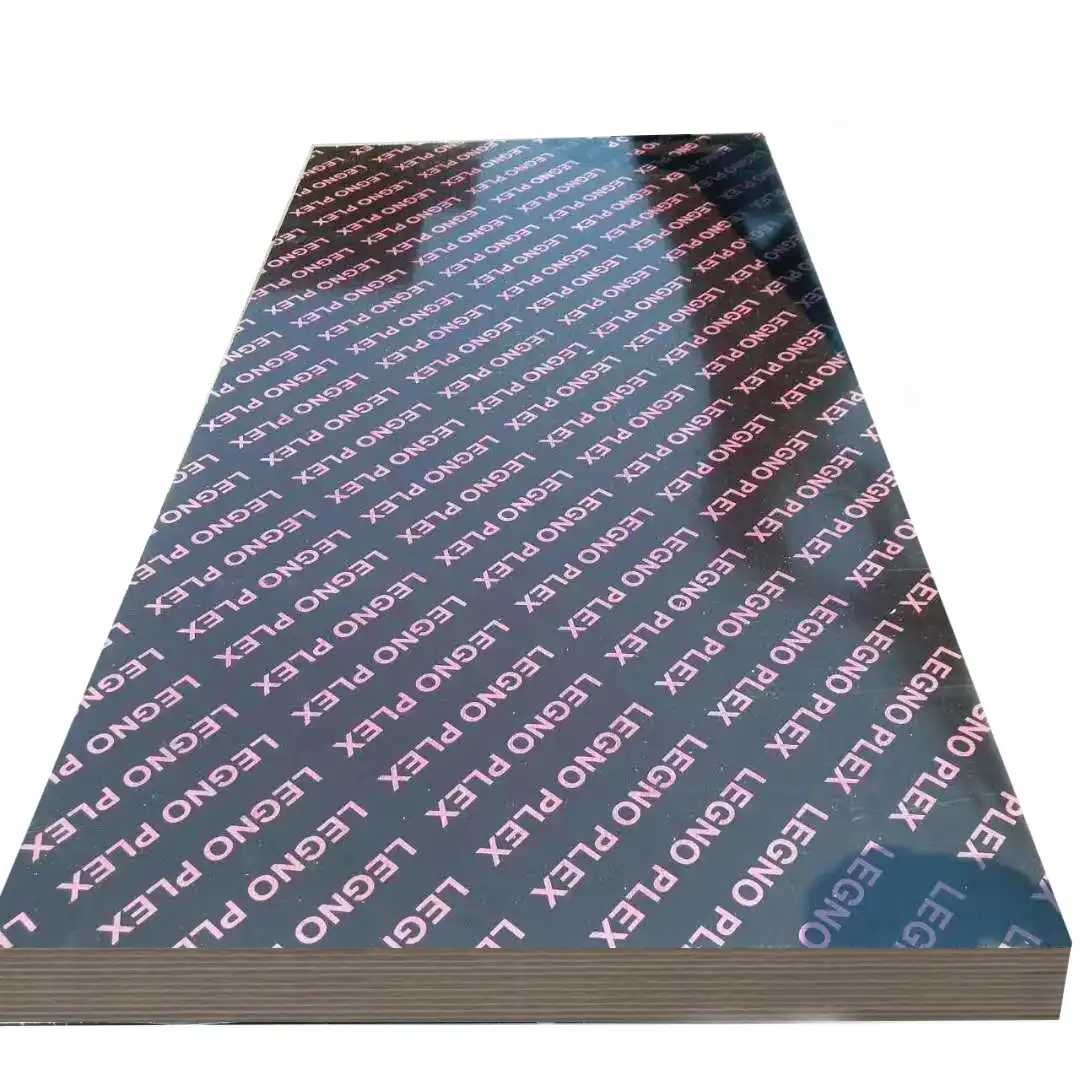
Manufacturer Direct Sale Price 18mm Marine Plywood 16mm 12mm Film Faced Plywood for Construction
SHOW MORE







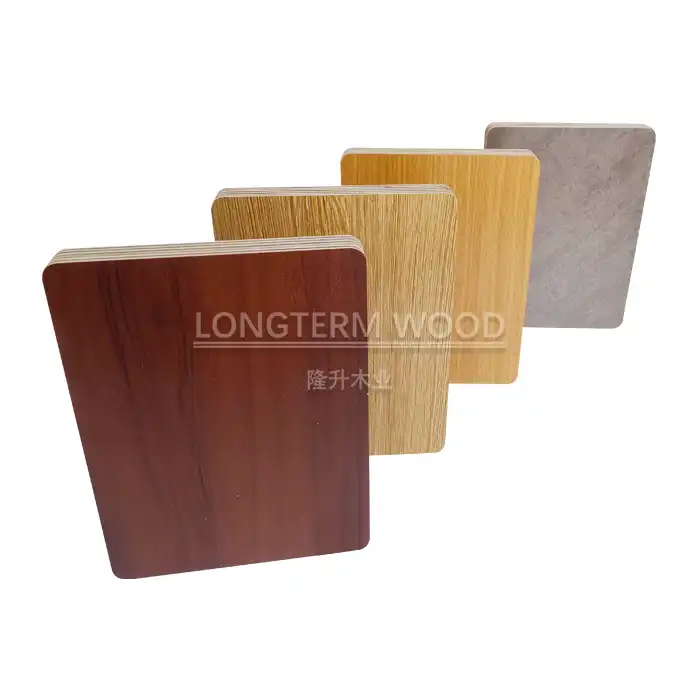
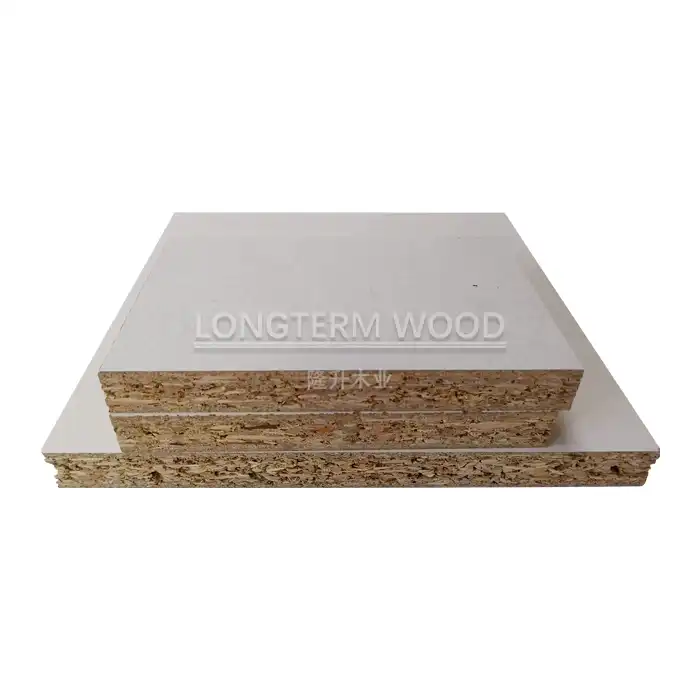
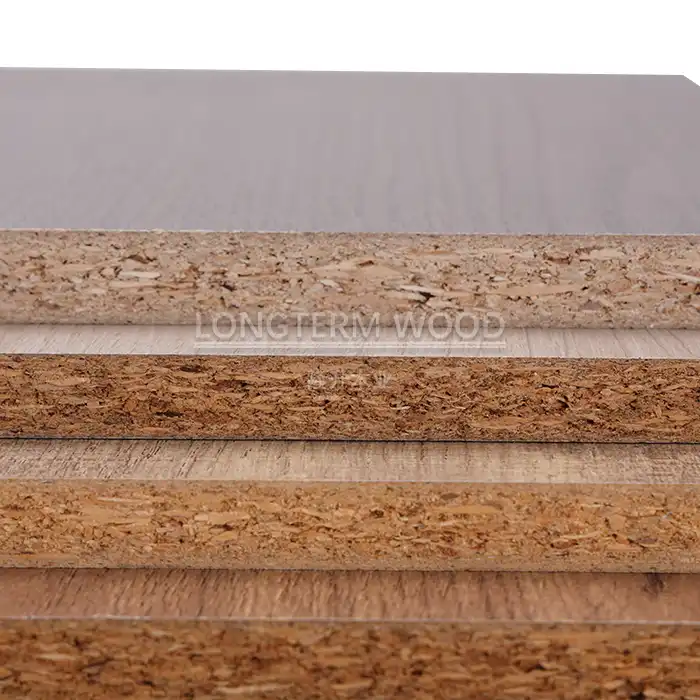
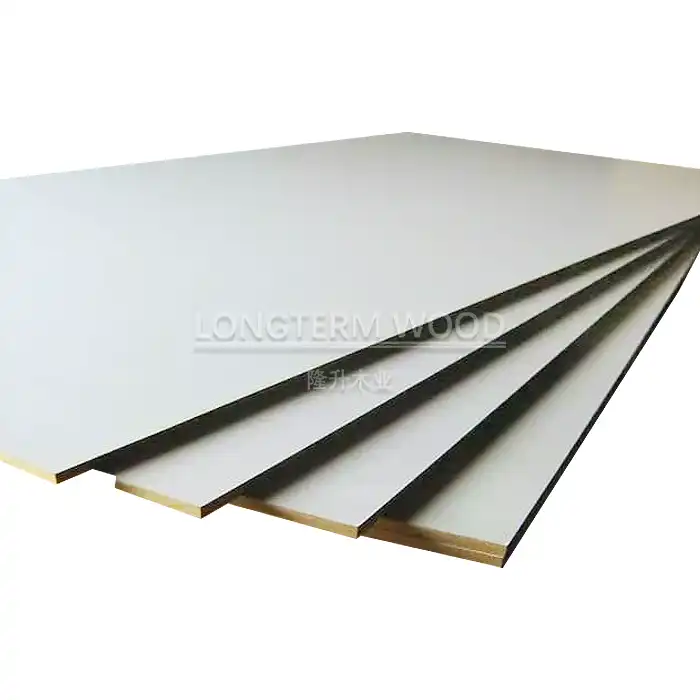
_1751335796402.webp)
